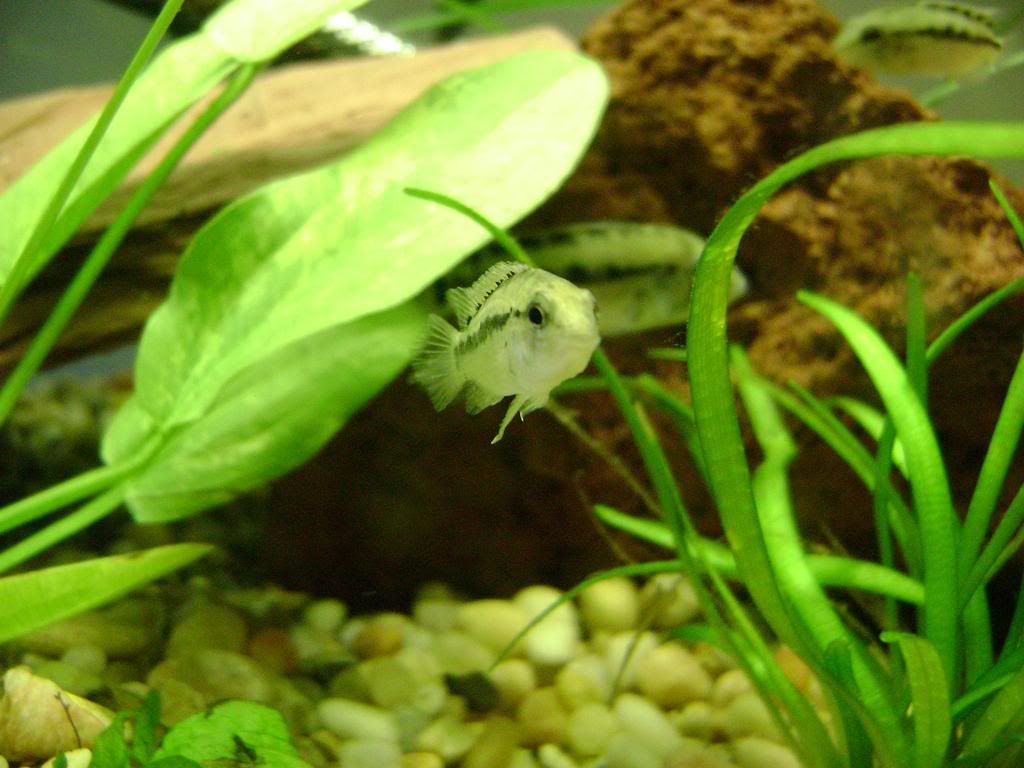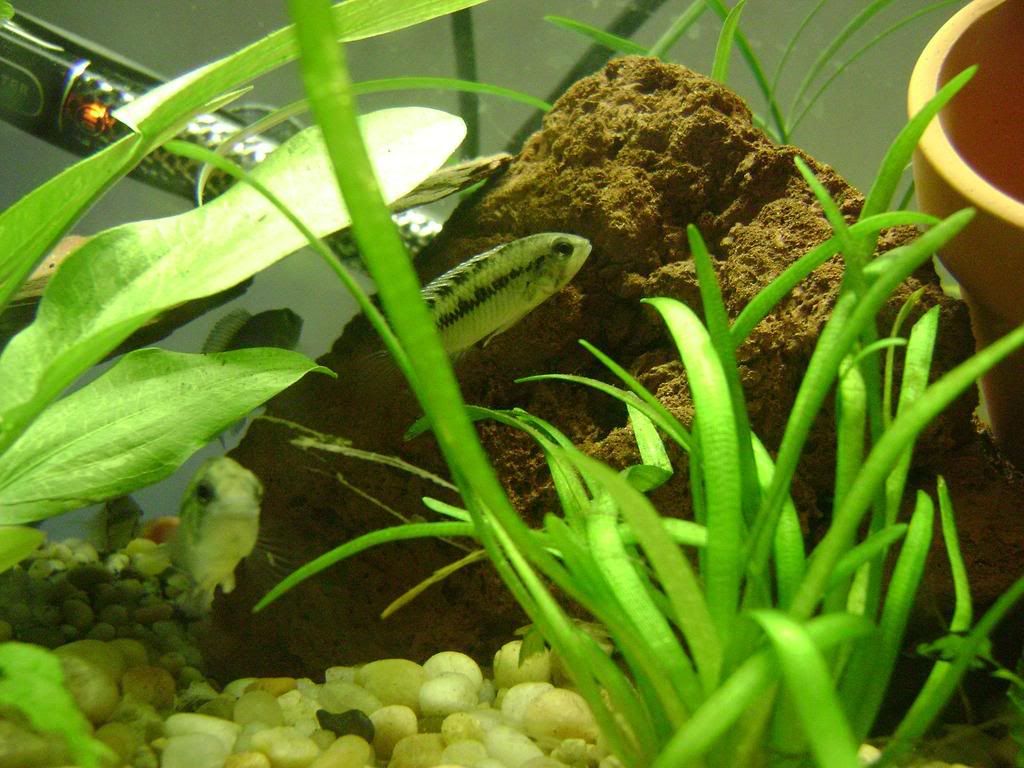-
Hello guest! Are you an Apistogramma enthusiast? If so we invite you to join our community and see what it has to offer. Our site is specifically designed for you and it's a great place for Apisto enthusiasts to meet online. Once you join you'll be able to post messages, upload pictures of your fish and tanks and have a great time with other Apisto enthusiasts. Sign up today!
You are using an out of date browser. It may not display this or other websites correctly.
You should upgrade or use an alternative browser.
You should upgrade or use an alternative browser.
Verification on ID
- Thread starter dac343
- Start date
Well I tried to do a positive ID I really did but I never did come across Alacrina. Once I found some pictures though especially of sub-adults I have to lean toward that choice. Hopefully I at least got one male in the group... Very hard to sex when most of them are only about an inch and it looks like there are only minor differences in characteristics between the two.
- Messages
- 11,548
- Location
- Denver, Colorado, U.S.A.
The ventrals on the fish in both photos look too long for them to be females. But at 1" it is too hard to say for sure.
So one other question about these guys. I don't see any real difference between fin sizes and shapes. I have noticed that 2 of the smaller ones have gotten darker spots of the first 2 dorsal fins and the dark lines along the lateral line have become a little bolder in color. Furthermore they appear to have more of a yellowish color than the other two who remain pale (there lines sometimes bleach out only to come back later) Could any of these traits help sex them? It appears that the paler ones are the more aggressive of the bunch. These fish can be really hard to figure out behaviorally. Thanks for any help.
- Messages
- 11,548
- Location
- Denver, Colorado, U.S.A.
It is virtually impossible to sex 1" fish. Fins of both sexes of A. sp. Rotpunkt (it is not A. alacrina, so don't use that name) are very similar in height and shape anyway. From their behavior it seems that you have probably have some of both sex. I suggest that you look at the ventral fins. Males will lose the black pigment on the front edge of the ventral fins as they mature; females will keep it.
Similar threads
Forum statistics
Latest profile posts
I'm looking for quality apistogrammas, can anyone recommend a good seller specialized in apistogrammas who ships in Europe? Thanks


